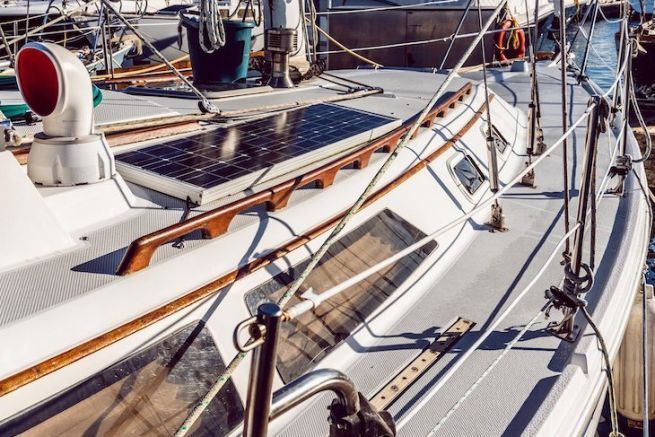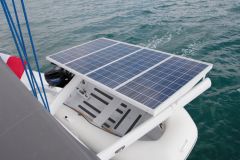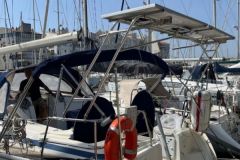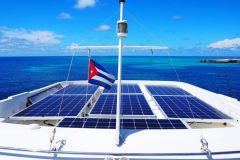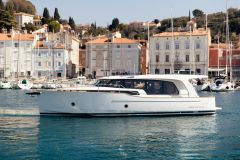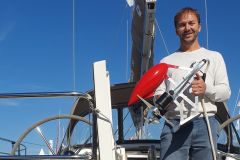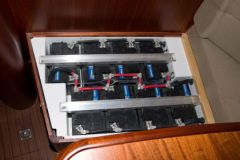Alternator
The fastest and most widely used means of generating power on board is the alternator, which is standard on all engines. Thus, when the engine is running, the alternator allows the batteries to be recharged. If you have a high energy requirement on board, you can change the original model to install a larger alternator.
Advantages: fast and delivered as standard
Disadvantages: engine noise
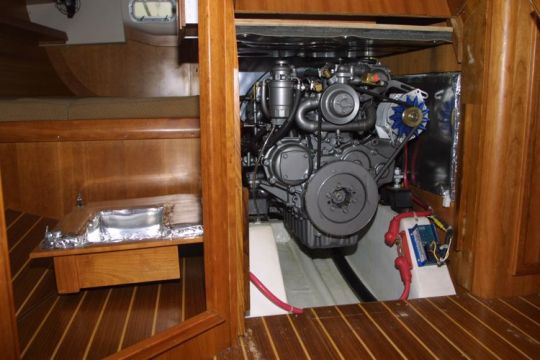
Wind turbine
An offshore wind turbine converts the apparent wind into electricity by means of an alternator. It can be installed on a mast or gantry but can take up space on small boats. Depending on the number of blades, it will take at least 6 knots of wind for the propeller to start turning. On average, a wind turbine can produce between 60 and 400 watts of energy.
Advantages: environmentally friendly, can be used for dampening
Disadvantages: noisy, ineffective downwind, requires a minimum of wind
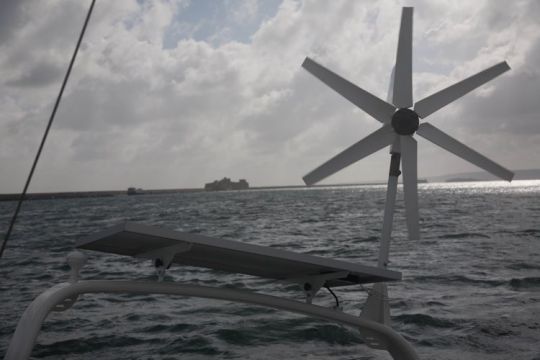
Solar panels
Solar panels convert solar energy into electricity thanks to the photovoltaic cells that cover them. Flexible, semi-rigid or rigid, they can be fixed or removable. The power of a solar panel depends on its surface area, but everything depends on the amount of sunlight and the inclination of the panels.
There are several types of materials, all of which have different yields, but the monocrystalline panel is the most efficient, with a yield of between 12 and 20%.
Advantages: environmentally friendly, quiet, can be used for anchoring
Disadvantages: requires deck space
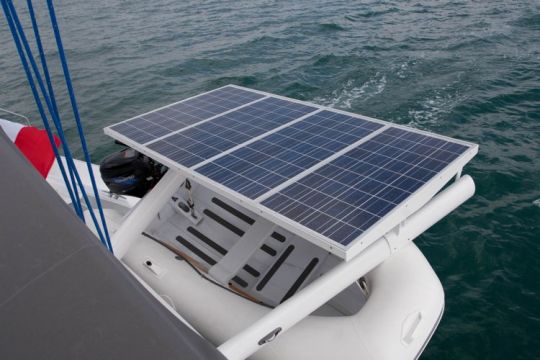
Hydrogenerator
The hydrogenerator uses the displacement of the boat to produce electricity. It consists of a submerged propeller that will transform the energy of the water into electricity. This renewable solution is easy to install and takes up little space, however, it can generate drag when sailing. On average, the hydrogenerator can produce about 60 watts of energy.
Previously, an alternator was used, which was positioned on the propeller shaft, the operation was roughly the same as that of the hydrogenerator, but it tended to create too much drag in the water.
Advantages: environmentally friendly, quiet, high performance
Disadvantages: loss of speed, price, only works when sailing
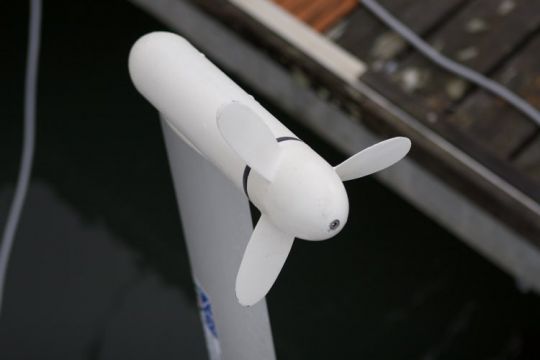
Generating set
Often offered on large boats, the generator provides electricity for onboard equipment, especially the most energy-intensive such as the television, refrigerator, air conditioning, etc.
To produce electricity, the generator set is powered by an internal combustion engine driving an alternator and therefore requires fuel. Not very ecological, it also takes up space on board (even if it can also be portable), and can only be installed on a boat at least 10 m long.
Advantages: fast, reliable
Disadvantages: polluting, noisy, imposing
Fuel cell
The fuel cell produces electricity through a chemical reaction (hydrogen oxidation).
Advantages: lightweight, space-saving
Disadvantages: price, requires fuel

 /
/ 